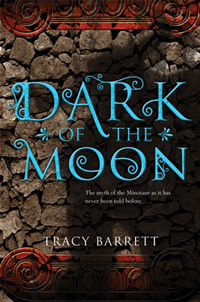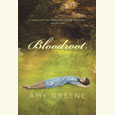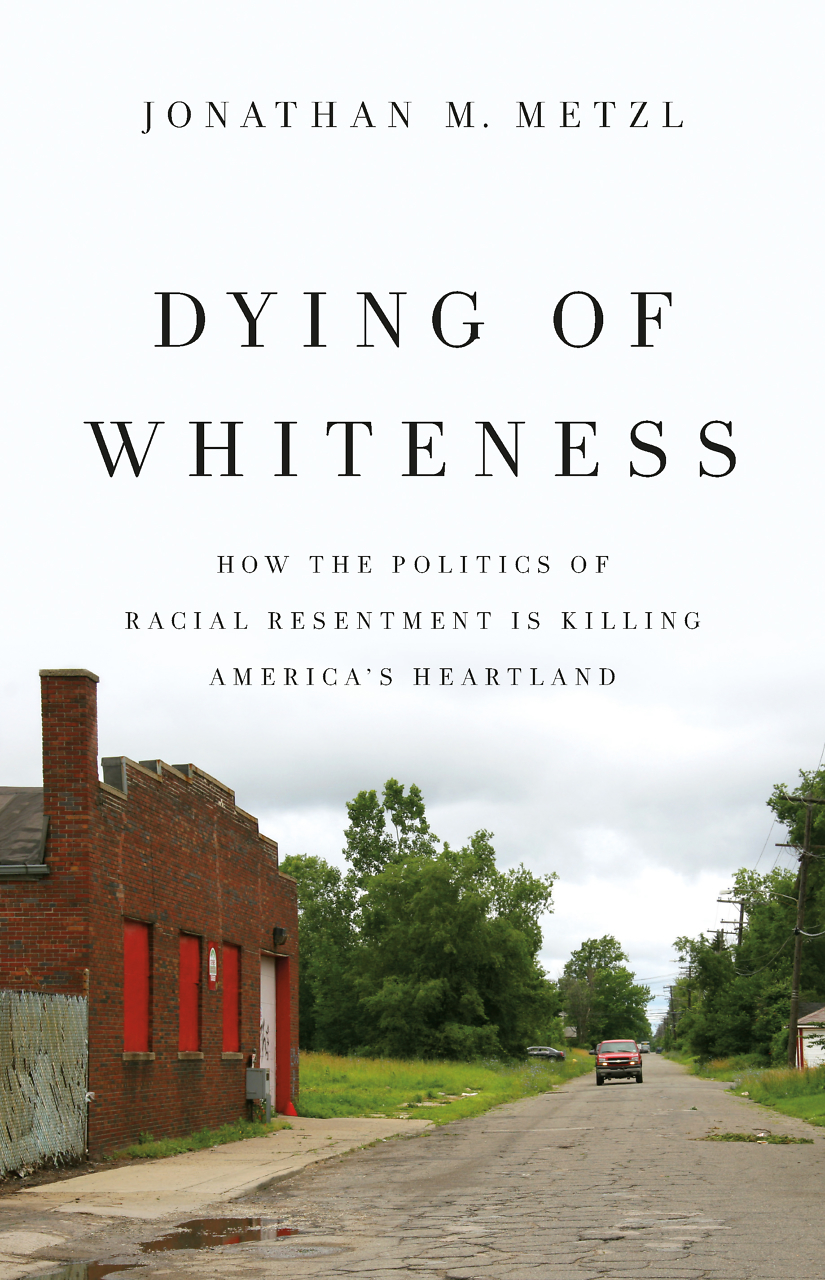Spinning Ariadne
Tracy Barrett’s retelling of the Theseus myth subverts ancient tradition—and will delight young readers
Tracy Barrett has a way with classical myth. Her last young-adult novel, the brilliant King of Ithaka, is an astonishingly original and surefooted reworking of Homer’s Odyssey, in which she somehow discovered new paths on what must be the Western canon’s most heavily trodden ground. Her newest book, Dark of the Moon, takes another famous Greek legend—the story of Theseus and the Minotaur—and makes it fresh and fascinating, even as it honors the foundations of the original tale.
For those who’ve forgotten, the myth goes something like this: in heroic times, a boy born in Troezen learns he’s the son of the Athenian king Aegeus and travels a perilous journey to join his father and reclaim his patrimony. Along the way, Theseus proves himself a hero by slaying various bandits and monsters. In Athens, he bravely offers to accompany a group of young Athenians about to be sent as human tribute to King Minos of Crete. In Crete, he penetrates the Labyrinth, kills the fabled Minotaur (the monstrous offspring of the Cretan queen Pasiphaë and a bull), and escapes with the help of Minos’s daughter Ariadne, whom he loutishly abandons on the island of Naxos. Arriving home, he neglects to signal his safe arrival by changing the color of his sails from black to white, and when his father Aegeus sees the black sail, he throws himself from a cliff into the sea that still bears his name today.
 There’s much more to the story—Theseus is a long-lived hero—but Barrett is mainly concerned with Ariadne’s place in the tale. Even ending at this point, she leaves herself plenty to work with, deftly hewing to the myth’s outline while reinscribing the ancient tale with new and surprising aspects of plot and character. As she did in King of Ithaka, Barrett discards various elements of the story, references others only glancingly, and infuses new meaning into nearly everything she describes.
There’s much more to the story—Theseus is a long-lived hero—but Barrett is mainly concerned with Ariadne’s place in the tale. Even ending at this point, she leaves herself plenty to work with, deftly hewing to the myth’s outline while reinscribing the ancient tale with new and surprising aspects of plot and character. As she did in King of Ithaka, Barrett discards various elements of the story, references others only glancingly, and infuses new meaning into nearly everything she describes.
The novel’s opening sentence, for instance, brazenly dismantles the very core of the Theseus myth. We enter the story at the Labyrinth’s center, where, Ariadne says firmly, “It isn’t true what they say about my brother—that he ate those children. He never did; he didn’t even mean to hurt them.” Ariadne’s brother, of course, is the murderous Minotaur, but in Barrett’s version, he’s only poor Asterion, born witless, physically deformed, and the victim of his own uncontrollable urges—a human to be pitied rather than a monster to be slain.
As Asterion is humanized, so too is Theseus, whose much-vaunted heroism is radically diminished in Dark of the Moon. Arriving in Athens after what was apparently a completely uneventful trip, he quickly embellishes his reputation: after all, he decides, “nobody knows me here. For all anyone in Athens is aware, I am the hero of my village and a great fighter.” Noting that everyone “seems to think that the road to Athens is fraught with peril,” he launches into a wholly fabricated account of the bandits and monsters he met and slew, and his royal audience gasps appreciatively. Though Barrett allows him to narrate half the novel, this is the first clue that Dark of the Moon is not really Theseus’s story: Ariadne is the novel’s true protagonist, and it’s her perspective—the perspective of a barbarian, human-sacrificing, goddess-worshipping female—that powers the tale.
This shift of focus takes a bit of getting used to; modern readers are, after all, ideologically closer to Athens than to Minoan Crete. It takes a while to sort out Barrett’s reconstruction of a hypothetical goddess-worshipping culture, where “Minos” is not the name of a king at all. Instead, it’s the name of a generic priest figure who helps the more cumbersomely titled She-Who-Is-Goddess figure out which man is inhabited by the god that year so she can sleep with him and sacrifice him to the harvest. It can be a bit bewildering, though Barrett is careful to explain her version of Minoan religion several times, lest young readers fail to follow the thread of the narrative. Along the way, she also alters the significance of the myth’s overfamiliar images—Ariadne’s famous ball of string, for instance—while leaving many elements of the religious mysteries (specifically those that Ariadne has been ill-prepared to participate in) tantalizingly vague.
 Refreshingly, Barrett does not hesitate to challenge her literary forerunners. In King of Ithaka, she roughed up Homer’s version of Telemachus’s quest (changing swathes of benign, comforting detail into episodes of menace and danger) before devising a paternal homecoming that turns convention completely on its head. In Dark of the Moon, she not only subverts ancient tradition but also manages to upend Mary Renault’s own stunning modern version of the Theseus myth. Renault’s deservedly famous The King Must Die and The Bull From the Sea, published in 1958 and 1962, took as their central theme the triumph of kingship and patriarchy over the goddess-worshiping culture that allegedly preceded them. But Barrett chooses to document the fall of the matriarchy from the inside; by highlighting the perspective of Ariadne, next in line for the priestesshood, she brings light to some of the darkest episodes of Greek myth. Seen from the Cretan perspective, murder becomes mercy killing, abduction becomes escape, and abandonment becomes mutual leave-taking. Even Medea, the most notorious woman in all of Greek myth, is very nearly exonerated: “The story of Medea’s courage had reached all the way to Krete,” Ariadne muses before launching into an explanation that will astound (and delight, by virtue of its brazenly creative logic) modern readers who have perhaps gotten a bit too used to thinking of Medea as the consummate villainess.
Refreshingly, Barrett does not hesitate to challenge her literary forerunners. In King of Ithaka, she roughed up Homer’s version of Telemachus’s quest (changing swathes of benign, comforting detail into episodes of menace and danger) before devising a paternal homecoming that turns convention completely on its head. In Dark of the Moon, she not only subverts ancient tradition but also manages to upend Mary Renault’s own stunning modern version of the Theseus myth. Renault’s deservedly famous The King Must Die and The Bull From the Sea, published in 1958 and 1962, took as their central theme the triumph of kingship and patriarchy over the goddess-worshiping culture that allegedly preceded them. But Barrett chooses to document the fall of the matriarchy from the inside; by highlighting the perspective of Ariadne, next in line for the priestesshood, she brings light to some of the darkest episodes of Greek myth. Seen from the Cretan perspective, murder becomes mercy killing, abduction becomes escape, and abandonment becomes mutual leave-taking. Even Medea, the most notorious woman in all of Greek myth, is very nearly exonerated: “The story of Medea’s courage had reached all the way to Krete,” Ariadne muses before launching into an explanation that will astound (and delight, by virtue of its brazenly creative logic) modern readers who have perhaps gotten a bit too used to thinking of Medea as the consummate villainess.
These alterations may offend readers raised on Edith Hamilton, Bullfinch, and Robert Graves, who may prefer ancient stories that have a single plot, immutable characters, and inevitable outcomes. But Barrett, who teaches Italian literature at Vanderbilt and was trained as a classical scholar, understands and embraces the inherent plasticity of myth. The Greek myths were never single versions of a canonical tale; for as long as human beings have sung of heroes, gods, and monsters, they’ve played fast and loose with the details. Depending on the singer, the location, and the audience, a heroic narrative can be—and has been, for thousands of years—endlessly revisited, reimagined, and revised. Dark of the Moon will forever change the way its readers imagine Theseus and Ariadne, and its influence will certainly be felt for as long as their stories are told.
Tracy Barrett will appear at the 2011 Southern Festival of Books, held October 14-16 in Nashville. To read Chapter 16’s earlier interview with Barrett, click here.


